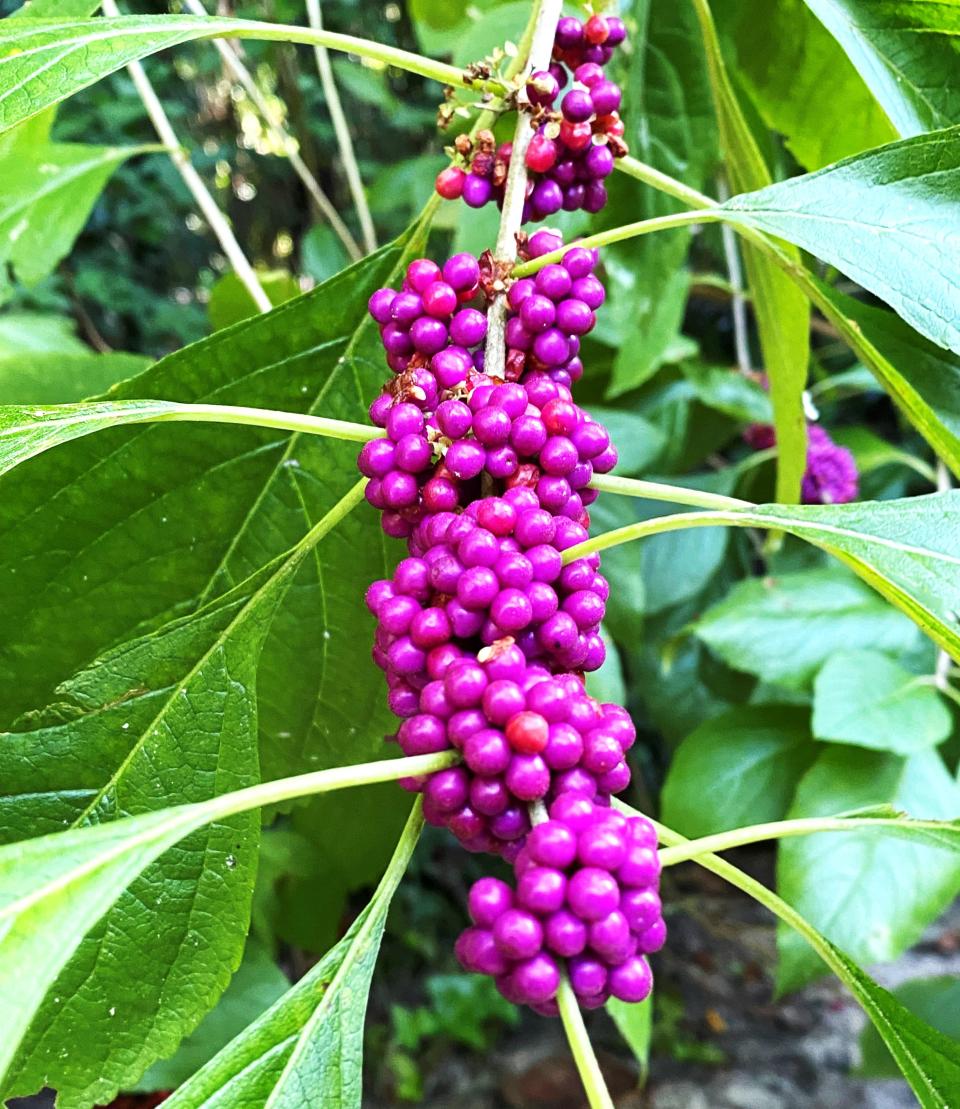A story lurks behind every plant and every animal | ECOVIEWS
Q. My 9-year-old daughter enjoys taking nature walks and learning the names of whatever we find. We have several field guides and check out images on the internet. I want to nurture her environmental interests. Do you have any suggestions for ways to enhance our walks?
A. Every plant and animal has characteristics that make it unique. Each has a history going back millions of years, culminating in traits only revealed through investigation. Thanks to field guides and downloadable apps such as iNaturalist and Pl@ntNet, if we can photograph the wildlife we see, we can identify it. Once you know what you are dealing with, a simple exercise can turn an outdoor encounter into a deeper learning experience.

For example, during a recent field trip at Salleyland, I came upon an attractive plant with orange flowers that reminded me of snapdragons. Because of an earlier visit from Harry Shealy, a retired botany professor, I know one of its common names is orange jewelweed, a type of impatiens native to North America. When held under water the leaves take on a silvery sheen reminiscent of a precious stone, hence the name.
Delving further, I learned that because jewelweeds bloom in late summer and fall, their flowers are a popular source of nectar for hummingbirds tanking up for their migratory flights south. When jewelweed flowers mature, the seeds can be entertaining because they do not just fall to the ground. They burst from the plant, a phenomenon you can observe if you touch them at the right time.
Jewelweed sap was reportedly used by Native Americans to relieve poison ivy, and according to a National Audubon Society field guide, the plant produces a fungicide effective against athlete’s foot. Wildlife writer Jim Casada tells me that, much like aloe, the “crushed stalks make a fine, soothing application for fire ant bites and bee stings.”
Another plant with an equally descriptive name is beautyberry. Beautyberries keep their fruiting bodies into winter and are eaten by birds and mammals. Various species of beautyberries are found on every continent except Antarctica.
American beautyberry, with its clusters of purple berries the size of pearls, is native to the Southeast. Farmers’ tales of the effectiveness of the leaves to ward off mosquitoes might raise a few eyebrows, but the joke is on the disbelievers. An article in a 2006 issue of the U.S. Department of Agriculture’s AgResearch Magazine reported on a scientific study in which laboratory tests isolated a natural compound contained by American beautyberry that repelled mosquitoes.
A promising byproduct of a related species, the beautyberry tree of India, was revealed in a 2020 publication in the Journal of Environmental Biology: Extracts from the plant have anticarcinogenic properties for certain types of cancer.
On the animal side of the ledger during this nature walk, I encountered several ebony jewelwings. Damselflies, a native species related to dragonflies, rank among the most elegant creatures to be found in a southern swamp. A worthwhile find in themselves, a value-added aspect is that fossil damselflies have been discovered from more than 250 million years ago, meaning they were flitting around before the age of the dinosaurs.
You can differentiate damselflies from dragonflies by the way they position their wings when they sit. Dragonflies spread their wings out flat; damselflies fold their wings alongside their body.
Take a walk around your neighborhood, whether it's through the woods, across a field or around a pond. Identify a few plants, animals or mushrooms in whatever manner works best for you — an app, a field guide or a companion who knows more about the natural world than you do.
Once you've identified an organism, do a background check. You may find that what you took for granted as just another pretty face has attributes that make it even more noteworthy. The more you learn about your natural surroundings, the greater your appreciation for them.

Whit Gibbons is professor of zoology and senior biologist at the University of Georgia’s Savannah River Ecology Laboratory. If you have an environmental question or comment, email ecoviews@gmail.com.
This article originally appeared on The Tuscaloosa News: A story lurks behind every plant and every animal | ECOVIEWS

